In-Depth Look at Turbocharger Components and Technology

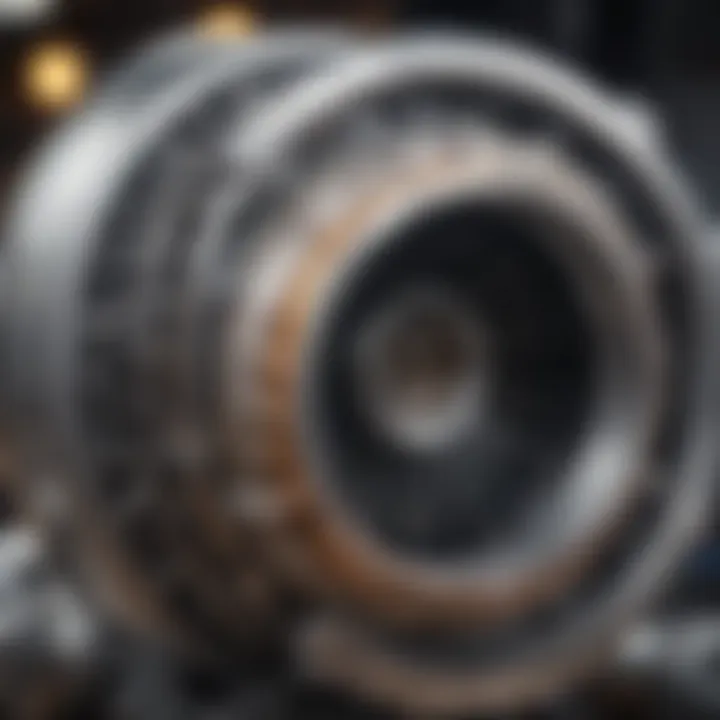
Intro
Turbochargers have become a staple in modern automotive engineering, primarily known for their ability to enhance engine performance without significantly increasing engine size or weight. The intricate relationship between each component of a turbocharger and engine efficiency plays a vital role in how vehicles perform under various conditions. Understanding these components not only sheds light on how a turbocharger works but also informs automotive enthusiasts, car owners, and prospective buyers about what truly drives mechanical excellence.
This guide navigates through the various parts of a turbocharger, illustrating their functions, materials, and the latest advancements in turbo technology. With the pressure on manufacturers to produce greener, faster, and more efficient engines, a well-rounded understanding of turbochargers is essential for anyone interested in the future of automobiles.
Automotive Features and Innovations
Overview of Latest Technologies
The evolution of turbocharging technology has been noteworthy. Advances such as variable geometry turbochargers (VGT) and twin-scroll designs showcase how turbocharging continues to adapt to the demands for efficiency and power delivery. The VGT enables the turbocharger to adjust its geometry based on engine speed, promoting faster spool-up and minimizing lag. Such innovations help in harnessing more power while keeping emissions in check.
In-Depth Look at Electric/Hybrid Vehicles
Electric and hybrid vehicles present new challenges and opportunities for turbocharging. Traditionally associated with gasoline engines, turbochargers are finding new use in hybrids and electric configurations. By combining electric motors and turbocharged engines, car manufacturers can achieve a unique balance of performance and fuel efficiency. In this context, turbocharging plays a part in not only boosting performance but also improving the overall drive experience through better throttle response.
Analysis of Autonomous Driving Systems
As vehicles increasingly incorporate autonomous driving technologies, the role of turbocharged engines shifts slightly. While turbocharging enhances engine response, it also affects the way systems manage power. Autonomous driving requires seamless integration of engine performance with the vehicle's electronic control units, necessitating advanced algorithms and real-time data processing to ensure optimal power delivery.
Evaluation of AI in Automotive Solutions
AI has made significant inroads into the automotive industry, offering groundbreaking solutions for both performance optimization and diagnostic processes. In turbocharging, AI systems can analyze how various components interact during driving scenarios, allowing for real-time adjustments that optimize performance. This not only ensures a smoother driving experience but also aligns with the industry's push for sustainability by minimizing waste in fuel consumption.
Maintenance Tips and Best Practices
Regular Maintenance Schedules
Taking care of a turbocharger is pivotal for longevity and performance. It’s recommended to follow a meticulous maintenance schedule including oil changes and filter replacements, as clean oil keeps the turbo functioning optimally. Many automotive experts suggest checking the turbo for signs of wear and tear every 30,000 miles.
DIY Repair Guides
Understanding basic turbocharger maintenance can save enthusiasts quite a bit of cash on repairs. Simple tasks such as changing the oil, inspecting the air intake for blockages, and ensuring proper hose connections can be begun with basic tools and knowledge.
Seasonal Car Care Strategies
Different seasons can impact turbochargers in various ways. Cold weather often leads to increased oil viscosity, making it harder for the turbo to work effectively. Conversely, summer can lead to higher engine temperatures. Regular checks and adjustments can enhance functionality year-round.
Addressing Common Issues and Solutions
Some common problems associated with turbo systems include oil leaks, turbo lag, and failing components. Detecting these issues early can often be the difference between a minor repair and a full replacement. Addressing such issues promptly can eliminate larger headaches down the road.
"Understanding the nuances of turbocharger systems can dramatically affect not just performance but the overall lifespan of your vehicle."
Trends in Automotive Industry
Market Analysis and Forecasts
As interest in turbocharging grows, market analysts project that the demand will increase steadily. With automakers striving to comply with stricter emissions regulations, the turbocharger provides a viable solution for maintaining performance while adhering to environmental standards.
Electric Vehicle Adoption Rates
The rise in electric vehicle sales has altered automotive landscapes. Even though they traditionally do not require turbochargers, many hybrid models employ them, illustrating a niche opportunity that blending technologies presents.
Growth of Ride-Sharing and Mobility Solutions
Ride-sharing services often rely on efficiency, which turbocharged cars can provide. With many consumers looking for cost-effective and efficient travel options, rideshare platforms are increasingly opting for vehicles equipped with turbochargers.
Consumer Preferences Shifts and Impacts
As consumer preferences lean towards fuel-efficient options, turbocharged vehicles are gaining popularity. The ability to marry power with efficiency resonates with modern drivers who seek both thrill and sustainability.
Educational Resources
Technical Knowledge Base
For automotive enthusiasts keen to enhance their understanding of turbocharging, a variety of educational resources exist. Websites like Wikipedia and Britannica provide comprehensive insights into the mechanics of turbochargers and their development over time.
Insights Into Automotive Engineering
For those serious about diving deeper, various technical publications delve into the engineering feats that turbochargers represent. They explain intricate designs and innovations that enthusiasts or professionals ought to be familiar with.
Certifications and Training Programs
Many automotive schools offer specialized programs focusing on modern technologies, including turbocharging techniques. Obtaining certifications can not only bolster one’s credentials but also enhance practical skills.
Future Trends in Automotive Education
As the automotive field evolves, so does education around it. With a focus shifting towards electric and hybrid technologies, understanding turbocharging's role within these systems will be paramount for future professionals.
The study of turbocharged engines is not just critical for enthusiasts but for anyone who recognizes the significance they hold in the advancement of automotive technology. As advancements continue to unfold, staying informed plays an essential role in navigating the automotive landscape.
Prologue to Turbochargers
When it comes to the mechanics of modern engines, turbocharging stands out as a game changer. Turbochargers enhance engine power output without the need to significantly increase the size of the engine itself. This is crucial because it allows manufacturers to create smaller, more fuel-efficient engines that offer respectable performance figures, making them popular among automotive manufacturers and car enthusiasts alike.
Definition and Functionality
In essence, a turbocharger is a device that forces extra air into the combustion chamber of an engine. This process results in more fuel being burned, which in turn produces more power. The fundamental components of a turbocharger include a turbine and a compressor, each tasked with specific roles in the overall functioning of the system. The turbine collects exhaust gases from the engine, converting thermal energy into mechanical energy, while the compressor draws in cooler, pressurized air into the engine’s intake.
The working principle of a turbocharger can be likened to a bicycle pump: when you push on the handle, the pump compresses air into a denser state, forcing more air into the tire, thus increasing its pressure. In a similar manner, a turbocharger compresses the air entering the engine, allowing for a more efficient and powerful combustion process.
Importance in Modern Engines
Turbochargers have become synonymous with performance due to their ability to significantly enhance an engine's output. Without them, car manufacturers might have to sacrifice fuel efficiency or performance—a compromise that most would prefer to avoid. Moreover, in an age where environmental impact is of paramount importance, turbocharging serves as a way to meet strict emission regulations while still delivering power.
- Efficiency: Less fuel is required to generate the same amount of power due to the turbocharger's ability to utilize exhaust gases.
- Size and Weight: A smaller engine can be designed with a turbocharger, which saves weight and space without compromising performance.
- Response Time: Modern advancements have led to improved spool-up times, meaning the turbocharger can react quicker to driver input, resulting in a more responsive feel.
"A turbocharged engine has the capability to deliver the thrill of superior performance while maintaining the efficiency of a compact engine."
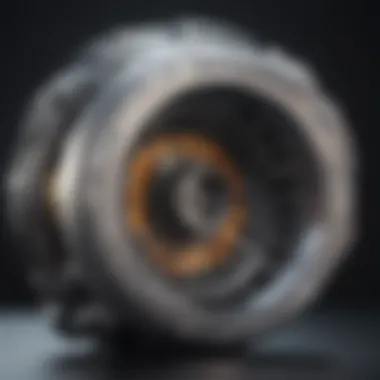
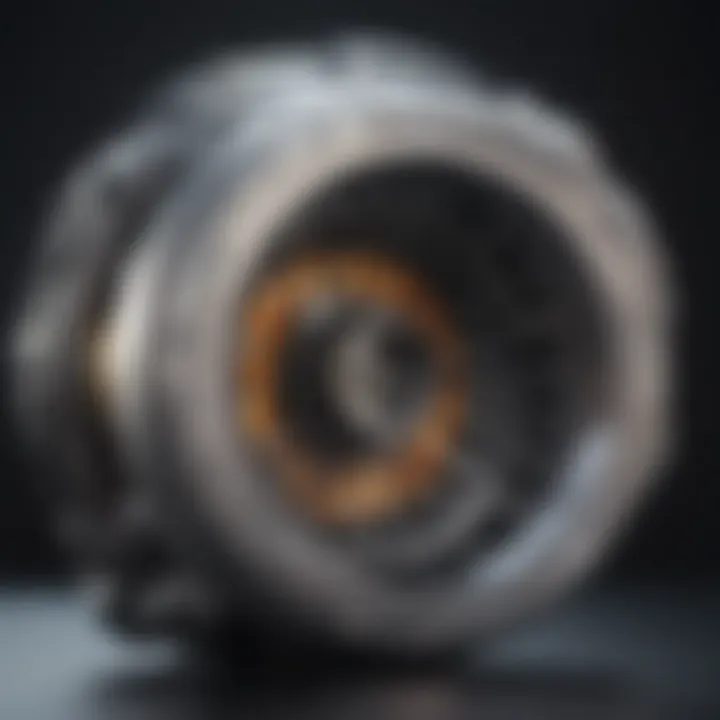
The implications of incorporating turbochargers extend beyond just performance metrics. They bring about advancements in engine technology, which align with the growing demand for improved fuel efficiency and lower emissions. From the compact cars that fill our city streets to the hefty trucks that voyage across highways, turbochargers play an indispensable role in today's automotive landscape.
Key Components of a Turbocharger
The components of a turbocharger play a pivotal role in elevating engine performance. Each part, from the turbine to the compressor, contributes to converting exhaust gases into usable power. Understanding these components is crucial for anyone involved in automotive engineering, tuning, or maintenance. They help to unlock the potential of an engine, making it more efficient and powerful.
In this section, we will dive into the three core parts of a turbocharger: the turbine housing, the compressor housing, and the center housing. Each housing is designed with specific functions and advantages that contribute to the overall efficiency of the turbocharging system.
The Turbine Housing
The turbine housing is where the exhaust gases flow through after they leave the engine. This component is designed to control the exhaust flow and convert thermal energy from the exhaust gases into mechanical energy. Essentially, the turbine housing houses the turbine wheel that spins as exhaust gases push against its blades.
Important considerations around the turbine housing include:
- Material selection: Turbochargers operate in extreme temperatures. Therefore, materials that can withstand high heat like cast iron or high-grade stainless steel are often used.
- A/R ratio: The area-to-radius (A/R) ratio affects the boost response and flow characteristics, influencing performance. A lower A/R can improve spool time while a higher A/R may enhance top-end power.
In summary, the turbine housing is crucially connected to how effectively power is generated from wasted exhaust gases, thus playing an important role in performance enhancement of the engine.
The Compressor Housing
Next up is the compressor housing, which is responsible for drawing in ambient air and compressing it before it enters the engine. This part not only influences the airflow but also affects the pressure that is forced into the engine cylinders. By increasing the pressure, the turbocharger allows the engine to inject more fuel, leading to greater power output.
The design considerations for the compressor housing are paramount to its functionality. Common aspects include:
- Efficiency: A well-designed compressor housing optimizes air intake and maximizes airflow efficiency, minimizing energy loss.
- Wheel design: The shape and size of the compressor wheel greatly influence performance. There are different types of wheels suited for various applications ranging from racing to everyday driving.
Overall, the compressor housing plays a significant role in ensuring that the engine receives a sufficient amount of air, in a compressed form, thus enhancing overall efficiency and power development.
The Center Housing
The center housing acts as the backbone of the turbocharger, integrating both the turbine and compressor housings while housing vital components like bearings and the shaft. Its design is often overlooked, but it serves critical functions in maintaining the turbocharger’s operational integrity.
Key factors to keep in mind regarding the center housing include:
- Bearings: Incorporating high-quality bearings allows for smooth rotation and minimizes friction, which is vital for long-term durability.
- Oil supply: The center housing must facilitate a proper oil supply system for cooling and lubricating the moving parts to prevent overheating and excessive wear.
To sum it up, without a robust and well-designed center housing, the effectiveness and performance of the turbocharger can drastically diminish, making it a cornerstone for turbocharger efficiency.
A turbocharger operates best when all its components work harmoniously, significantly reducing lag and enhancing engine response.
By understanding the key components and their respective functions, automotive enthusiasts can appreciate the engineering marvel that is the turbocharger and its impact on modern engines. Each piece plays a significant role in contributing to the big picture of turbocharged performance.
The Turbine: Design and Function
The turbine is not just another cog in the wheel of a turbocharger; it stands as the heart of the system. This component harnesses the energy from exhaust gases and converts it into mechanical energy. You might say it’s akin to a windmill spinning away, but instead of harnessing the breeze, it’s working with the force of what’s left when fuel combusts. Vital to achieving improved engine efficiency, the turbine’s design and functionality significantly influence how well the turbocharger performs overall.
Turbine Wheel Characteristics
The turbine wheel plays a pivotal role in determining performance. Typically made from materials that withstand intense heat and pressure, this wheel is optimized to work efficiently across different engine loads. The design relates closely to the shape and size of the blades, as these directly impact how quickly the turbine can react to changes in exhaust flow. A well-designed wheel can contribute to lower turbo lag, allowing the system to spool up faster.
Heat resistance in turbine wheels is crucial since the exhaust gases reach incredibly high temperatures. Turbine wheels are often constructed from a superalloy—think of it like a superhero suit for metal! With this alloy, they can withstand extreme conditions without cracking or deforming.
Performance Factors
Several factors come into play that can influence the turbine's performance. Primarily, these include exhaust gas flow rate and temperature. If the gas flow is insufficient or too hot, it can hinder the turbine's ability to spin effectively. It's a tricky balancing act; too little flow means sluggish response, while too much heat can lead to unwanted warping or failure.
Another performance determining factor is the turbine's geometry. Engineers often tweak the shape to optimize how air interacts with the turbine wheel. An ideal geometry helps maximize the energy extracted from the exhaust gases and, in turn, boosts the engine's overall efficiency.
Types of Turbines
Different vehicle applications lead to various turbine designs. Understanding these can reveal the advantages and trade-offs associated with each.
Single-scroll
A single-scroll turbine, as the name suggests, features a single channel for exhaust gases to flow through. One of the advantages lies in its simplicity. It tends to be more cost-effective to manufacture and install, making it a common choice for many vehicles. A straight shot for the exhaust gases generally results in a smooth spool-up, but this design may struggle at lower RPMs when compared to more sophisticated options.
The key characteristic here is that while it is straightforward, this simplicity often translates to limitations in top-end performance for high-demand situations.
Twin-scroll
The twin-scroll turbine uses two separate channels for exhaust gas flow, enabling it to better harness energy from the exhaust pulses. This design allows for enhanced performance across a wider range of engine speeds. The major benefit of a twin-scroll setup is that it reduces turbo lag, delivering quicker power delivery when needed most.
It's particularly beneficial for engines with multiple cylinders where exhaust pulses can be staggered for more efficient energy extraction. However, it is more complex and costly to produce compared to single-scroll turbines.
Variable geometry
Variable geometry turbines (VGT) take things to another level with their adjustable blade design. They can change their geometry based on airflow conditions, which makes them incredibly versatile. When the engine is at low RPMs, the turbine closes down to increase exhaust velocity, essentially optimizing performance at any speed.
However, they do come with their set of challenges. Maintenance can be a headache due to the moving parts, which might wear out over time. Despite this, the adaptability of VGTs to various engine conditions makes them a favored choice among high-performance applications.
Variable geometry turbines are not just the future— they represent a significant leap in engineering, enabling engines to remain both responsive and efficient.
In summary, the design and function of turbines are pivotal to the overall effectiveness of turbocharging systems. Everything from the characteristics of the turbine wheel to the performance factors and types reflects the complex balance of engineering that helps engines achieve peak performance.
The Compressor: Enhancing Airflow
The compressor plays a pivotal role in the turbocharger's capacity to increase engine performance. It's essentially the heart of the turbocharging system, taking in ambient air, compressing it, and sending it to the engine. By boosting the amount of air that enters the combustion chamber, the compressor allows for more fuel to be burned, leading to improved power output and efficiency. Without an effective compressor, a turbocharged engine wouldn't be able to function at its full potential.
Compressor Wheel Design
The design of the compressor wheel is critical for optimizing airflow. Typically made from lightweight materials, the wheel spins at high speeds to efficiently push air into the system. Often, manufacturers use advanced engineering techniques to enhance the wheel’s blade shape; this design can significantly influence the airflow characteristics and pressure at the output. The blades must be carefully angled and sized to maintain a balance between efficiency and performance. In a nutshell, a well-designed compressor wheel ensures that air is effectively compressed while minimizing turbulence and energy loss.
Pressure Ratios
Pressure ratios refer to the comparison between the pressure of the air entering the compressor and the pressure of the air exiting. This ratio is an essential factor because it provides insight into the compressor's performance capabilities. The higher the pressure ratio, the more air is forced into the combustion chamber, which results in greater power. However, pushing for too high a ratio can lead to complications like overheating and inefficiencies. Thus, understanding pressure ratios is vital for tuning turbochargers to perform optimally without causing damage to the engine.
Compressor Types
The effectiveness of the compressor can vary widely based on its design; two main types are commonly discussed in the context of turbocharging: centrifugal and axial. Each type has its unique advantages and applications.
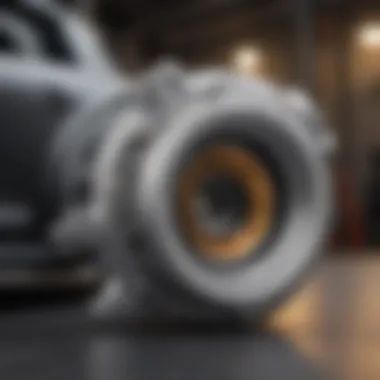

Centrifugal
Centrifugal compressors are often favored in performance applications due to their high efficiency at higher pressure ratios. They work by utilizing a rotating disk with blades, converting kinetic energy from rotation into pressure. This type tends to be more compact and lightweight, allowing for easier integration into a variety of automotive designs. A key characteristic of centrifugal compressors is their ability to deliver a large volume of airflow without needing a substantial space. However, they can struggle at low-speed operations, which can lead to lag in some applications.
Advantages of Centrifugal Compressors:
- Compact and lightweight design.
- High efficiency at elevated pressures.
- Capable of excellent airflow characteristics.
Disadvantages:
- Performance drops at low speeds.
- Potential for surge at improper tuning.
Axial
In contrast, axial compressors feature a different approach for boosting airflow, as they move air parallel to the axis of the rotation. They typically have a more complex design with multiple stages to increase efficiency. Axial compressors shine in applications where a large volume of air needs to be moved at lower pressures, making them an excellent choice for aircraft and certain larger engines. While their complexity can lead to higher costs and size, their efficiency across a broad operating range can be unmatched.
Advantages of Axial Compressors:
- High efficiency at lower pressure ratios.
- Suitable for very high flow rates.
Disadvantages:
- Generally larger and heavier.
- More complex designs can increase costs.
In the spectrum of turbocharging technology, selecting the appropriate compressor type is fundamentally a balancing act. Automotive designers must weigh the benefits of performance versus size, cost, and application goals to achieve the optimal outcome.
As we explore further into turbocharger design, understanding the fundamental differences in compressor types helps tailor solutions for specific performance goals in automotive engineering.
Center Housing: The Core of Integration
The center housing of a turbocharger serves as the pivotal foundation where multiple components converge, ensuring optimal functionality and performance. This structure not only houses the essential elements of the turbocharger but also facilitates the necessary mechanical interactions that allow the system to function seamlessly. It is vital as it integrates key components such as the compressor wheel, turbine wheel, and the shaft, all working in harmony to boost engine efficiency. Without a reliable center housing, the turbocharging system would struggle, akin to a well-orchestrated symphony without its conductor.
Bearings and Shaft Dynamics
The bearings within the center housing are instrumental in the operation of the turbocharger. They permit the smooth rotation of the shaft that connects the turbine and compressor. Think of these bearings as the unsung heroes of the turbocharger, quietly supporting the rotating assembly while enduring the extreme conditions present in an engine.
The bearings come in various forms, notably ball bearings and journal bearings, each with its own advantages and drawbacks. Ball bearings offer lower friction and can support higher speeds, making them ideal for performance applications. On the other hand, journal bearings, while typically more robust and cost-effective, may suffer from higher friction at high RPMs.
These bearings require precise tolerances. A slight misalignment can lead to catastrophic failure, which often results in an engine overhaul. Regular maintenance and monitoring of these components can prolong the life of the turbocharger, making them a focal point for any serious automotive enthusiast.
Oil Supply and Cooling
Another crucial aspect of the center housing is its role in servicing the turbocharger's oil supply and cooling needs. Turbochargers operate under extreme heat generated by exhaust gases, which can exceed 1000 degrees Celsius. Without effective cooling and lubrication, the components, such as the bearings and shaft, would fail rapidly due to thermal stress and friction.
The oil system is typically a pressurized setup, where oil circulates through the center housing from the engine's oil pump. This oil not only lubricates moving parts but also acts as a coolant. Many systems include a return line that allows used oil to drain back to the engine, maintaining a constant flow and preventing buildup. Inadequate oil supply can lead to a rise in temperature, potentially resulting in serious damage to the shaft and bearings.
In summary, the center housing is integral to the overall operation of a turbocharger. It secures the structural integrity of the device, houses the vital components, and ensures they function optimally under extreme conditions. This critical element often does not get the appreciation it deserves, yet it serves as the backbone of turbocharging technology.
"In the heart of every turbocharger lies the center housing, where precision engineering meets the relentless demands of performance."
Ensuring proper maintenance and understanding of this core element can make all the difference in unleashing the full potential of turbocharging.
Supporting Components
In the world of turbocharging, supporting components hold pivotal roles that ensure the turbocharger operates smoothly and efficiently. These components, while not the main attractions, are essential for the turbocharger to deliver its promise of enhanced performance. By understanding what these parts are and how they function, one can gain a clearer perspective of the turbocharging system as a whole. Key supporting components include the wastegate, intercoolers, and the intricate piping and connections that tie everything together.
Wastegate
The wastegate is a critical part responsible for controlling the amount of exhaust gases that bypass the turbine in the turbocharger. Essentially, its main function is to maintain the desired boost pressure within the engine. Without a proper wastegate, one could easily end up with excessive boost, leading to potential engine damage caused by over-boosting.
There are generally two types of wastegates: internal and external.
- Internal wastegates are integrated within the turbocharger itself, making them more compact. They provide a simpler installation but can be limited by design.
- External wastegates are installed separately, allowing for more tuning flexibility and performance benefits, particularly in high-powered setups.
Wastegates also play a role in improving turbocharger responsiveness. When the engine's demand for thrust diminishes, the wastegate opens to limit exhaust flow to the turbine, allowing the turbo to spool back down more quickly. This function minimizes turbo lag, ensuring that power delivery is responsive and controlled.
Intercoolers
Intercoolers are indispensable for any turbocharged system. When air is compressed in the turbocharger, it heats up significantly, which can negatively impact performance. Intercoolers work by cooling the compressed air before it enters the engine. This cooling process not only increases the density of the air – allowing for a greater mass of oxygen to enter the cylinder – but also reduces the risks of knocking or pre-ignition.
The effectiveness of an intercooler can greatly influence overall engine performance. Consider these factors:
- Airflow Design: The way the intercooler is designed can either facilitate or restrict airflow, affecting the heat transfer efficiency.
- Size: Larger intercoolers typically offer improved cooling but may introduce complexity in installation and airflow path.
- Material Properties: Materials that conduct heat well are essential for efficient cooling.
Many enthusiasts, when upgrading their turbo systems, often consider larger or more efficient intercoolers to maximize the turbocharger's potential. This upgrade is not only about looking cool; it has direct effects on performance and longevity of the engine.
Piping and Connections
Much like the blood vessels in a living organism, piping and connections are crucial for transporting air and sometimes coolant throughout the turbocharger system. Every bend, curve, and joint in the piping can create resistance and affect the flow dynamics. Thus, optimal piping design is essential for effective turbo functioning.
Key considerations for turbo piping include:
- Diameter: The correct diameter ensures enough air can pass through without causing excessive turbulence. Too small a diameter can choke airflow, while too large might reduce air velocity.
- Material: Most turbos use aluminum or stainless steel piping due to their strength and heat resistance; however, weight considerations can also influence material choices.
- Seals and Fittings: Proper seals and fittings are critical to prevent leaks, which can diminish performance and efficiency.
In summary, supporting components like the wastegate, intercoolers, and proper piping are often overlooked but are vital for the optimal performance of turbocharged engines. They ensure the turbocharger operates not just efficiently, but safely, giving enthusiasts the power and reliability they seek. Understanding these elements adds layers of appreciation for the engineering marvel that is turbocharging.
"A turbocharger is not merely a part but a symphony of components working in harmony. "
For deeper insights regarding turbocharger components, you may want to check related sources like Wikipedia or engage in discussions on platforms like Reddit.
Material Considerations in Turbocharger Design
When delving into the intricate realm of turbocharger design, one must not ignore the pivotal role that materials play. Every component of a turbocharger is subject to stress, heat, and corrosion. Choosing the right materials can significantly affect performance, lifespan, and reliability. As engine temperatures soar and pressures rise, the materials must stand the test of both time and extreme conditions. Let’s take a closer look at some of the specific factors at play in material considerations for turbochargers.
Heat Resistance
Turbochargers operate in a harsh environment, often reaching high temperatures due to the combustion process and the heat generated from exhaust gases. The need for materials that can withstand such extreme heat is non-negotiable. Components like the turbine housing and the turbine wheel are subject to temperatures that can climb well above 1,000 degrees Celsius.
Key materials used include:
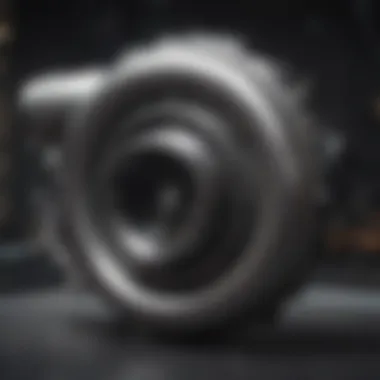

- Inconel: A nickel-chromium superalloy often favored for its exceptional heat resistance and ability to maintain strength at elevated temperatures.
- Stainless Steel: Commonly used for the turbine housing, this material provides a good balance of heat resistance and corrosion protection.
- Ceramic Materials: Increasingly used in high-performance turbochargers, ceramics can withstand higher temperatures than most metals, making them suitable for applications where weight is critical.
Ensuring effective heat dissipation and minimizing thermal expansion are essential design considerations. If the materials don’t hold up under heat, it can lead to component failure, which could spell disaster for an engine.
Durability and Weight Factors
While heat resistance may be the first thing that comes to mind when it comes to materials, durability and weight are equally important. The components of a turbocharger must endure not just high temperatures but also mechanical stresses from high-speed rotations and vibrations. The durability of materials ensures that your turbocharger can withstand the rigors of performance, especially in racing or aggressive driving scenarios.
Considerations include:
- Tensile Strength: The ability of a material to withstand tension without failing. Materials like Inconel and high-grade alloys are chosen for their high tensile strength.
- Fatigue Resistance: Turbochargers undergo cycles of stress as they spool up and down. Materials must resist fatigue to prevent failure over time.
- Weight Optimization: Lighter materials contribute to better vehicle performance, improved fuel economy, and responsiveness. Using advanced composites or reduced weight alloys can be beneficial, though it often comes at a higher cost.
The balance of durability and weight can often dictate performance. Finding the right combination can mean the difference between a turbocharger that lasts and one that fails prematurely.
In summary, material considerations play a critical role in turbocharger design. The selection of resistant and durable materials directly correlates to efficiency, performance, and the longevity of the entire system. Automotive enthusiasts and professionals should pay careful heed to these elements to ensure that turbochargers operate optimally under demanding conditions.
Turbocharging Technologies and Innovations
Turbocharging has evolved significantly over the years, making it a focal point in modern automotive engineering. The advancements in turbocharging technologies and innovations are key to enhancing performance, efficiency, and meeting stringent emissions regulations. This discussion touches on various technological developments that reflect the industry's shift toward a greener and more performance-oriented future. It dives deep into how innovations in turbocharging impact engine designs and the driving experience.
Overview of Latest Advancements
The world of turbocharging is rapidly changing, with innovations constantly reshaping how we think about engine performance. One notable advancement is the integration of electric turbochargers, which harness electrical energy to spool up the turbine more quickly, reducing lag and enhancing responsiveness. This technology essentially provides the best of both worlds—the efficiency of traditional turbos along with the immediacy typically associated with supercharging.
Another critical development is variable turbine geometry (VTG). VTG allows the angle of the turbine blades to adjust based on engine speed and load conditions. In practical terms, this means turbochargers can deliver higher power at low RPMs while still maintaining peak efficiency at high RPMs.
Other technological strides include better materials and coatings that allow turbochargers to withstand higher temperatures and pressures, thereby maximizing durability and thermal efficiency. Advances in simulation tools and computer-aided design are also making it easier for engineers to design custom turbocharging solutions specifically tailored for different vehicle types, resulting in optimized integration.
- Electric Turbochargers: Reduce lag and improve throttle response.
- Variable Geometry Turbines: Enhance flexibility in performance across different RPM ranges.
- Advanced Materials: Lead to better heat resistance and longevity.
- Simulation Technology: Improves customization and performance optimization.
Impact on Performance and Efficiency
The implications of these advancements are profound. First off, enhanced spool time from electric turbochargers translates directly to improved engine responsiveness, a feature that car enthusiasts relish. This leads to a more engaging driving experience, where acceleration feels instantaneous rather than delayed.
The variable geometry turbines contribute significantly to engine efficiency. The ability to adjust blade angles means that drivers not only receive power when needed but also experience improved fuel economy. This is particularly beneficial in scenarios like city driving where stop-and-go traffic typically robs performance vehicles of their vigor. Engines equipped with modern turbocharger technologies can balance performance and eco-friendliness.
Moreover, various advancements play a role in lowering aggressive emissions outputs. By enabling more complete combustion, these turbocharging innovations help manufacturers hit stricter emissions targets, all while delivering the performance consumers expect.
"Turbocharging technology is the bridge between performance and sustainability in today’s automotive world."
Challenges and Limitations
When it comes to turbochargers, it’s not all smooth sailing. Understanding the challenges and limitations is vital for anyone invested in automotive engineering or simply keen on performance upgrades. This section delves into the inherent complexities that turbocharging systems must contend with, from operational delays to maintenance dilemmas.
Spool Time and Lag
One of the most talked-about aspects of turbochargers is the spool time. This refers to the duration it takes for the turbo to reach its optimal speed after pressing down on the accelerator. When you hit the gas pedal, you may feel a delay in response, often called turbo lag. It's like waiting for a friend to finish their story before you can share yours.
Turbo lag is influenced by various factors like turbo size, engine design, and exhaust flow characteristics. A larger turbo offers more power potential but may take longer to spool. This lag can result in a less responsive driving experience, especially in lower RPM ranges. Car enthusiasts might find this frustrating when they're expecting instant acceleration.
Some manufacturers have tackled this problem with techniques like twin-scroll designs, which can improve responsiveness. Moreover, utilizing smaller turbochargers can also help reduce lag, providing that quick punch when you need it. However, downsizing often comes with trade-offs in terms of peak performance.
"Turbo lag can be the Achilles' heel of an otherwise stellar performance build. Finding the right balance is key."
Maintenance Considerations
Every mechanical part has its share of upkeep, and turbochargers are no exception. Regular maintenance is paramount to ensure longevity and efficiency. The complexity of the system means that even a simple oversight can lead to significant issues. For instance, the oil supply is crucial for cooling and lubrication. Poor oil quality or neglecting the oil change can lead to catastrophic turbo failure.
It's also important to note that, because of their operation in high-temperature and high-pressure environments, gaskets and seals can wear out more quickly. Thus, keeping an ear out for strange noises or leaks can save a lot of headache down the road.
A common concern is also the intercoolers. If they become clogged or ineffective, the turbocharged engine can suffer from overheating. Periodic checks for airflow can make a world of difference.
Investing in quality components and servicing at regular intervals is wise to deal with these challenges. Though this kind of diligence might feel tedious at times, it’s an investment in consistency and performance that many seasoned automotive enthusiasts will agree upon.
In summary, navigating the challenges and limitations of turbocharging requires a thorough understanding and proactive approach. From handling spool time to prioritizing maintenance, each element is pivotal in enhancing both the lifespan and capability of turbocharger systems.
Future Trends in Turbocharging
The landscape of turbocharging is shifting, driven largely by advancements in vehicle technology and the growing emphasis on sustainability. Understanding the future trends in turbocharging is critical for automotive enthusiasts and professionals alike, as this component continues to evolve. These trends not only highlight the increasing role of turbochargers in enhancing engine performance but also address the global push for more eco-friendly solutions in the automotive industry. Let's dive into some specific elements of this transformation.
Integration with Hybrid and Electric Vehicles
Turbochargers are no longer relegated to traditional gasoline or diesel engines. Their role is expanding into the realm of hybrid and electric vehicles, where efficiency becomes paramount. As manufacturers look to maximize power while minimizing fuel consumption and emissions, integrating turbocharging technology provides a viable solution.
- Power Boosting: In hybrids, turbochargers can effectively increase power output without necessitating a larger engine. They make it easier to maintain performance levels while keeping the overall size and weight down.
- Reduced Lag: One of the criticisms of hybrids is the perceived delay in acceleration due to their reliance on electric motors. Integrating turbocharging can mitigate this issue by providing immediate thrust, enhancing the driving experience.
- Synergy with Electric Motors: The combination of electric motors with turbocharged engines allows for sophisticated energy management systems that optimize performance and efficiency. This integration means that as energy recovery systems improve, turbocharging can further enhance an engine's responsiveness.
The trend towards hybrid and electric vehicle integration indicates a broader acceptance of turbocharged systems as essential components of modern automotive engineering.
Advancements in Efficiency Metrics
As the automotive industry faces pressures to improve efficiency and reduce environmental impact, turbocharging technologies are undergoing rigorous enhancements. The focus on efficiency metrics is pivotal for turbocharging's future, enabling better performance with lower emissions.
- Turbo Efficiency: Traditionally, turbocharger efficiency depended on the design and materials used. Recent advancements focus on optimizing the geometry of turbine and compressor wheels. By using advanced computational fluid dynamics, engineers can design components that work more effectively across varying engine loads.
- Variable Geometry Turbos: These innovations allow for increased versatility by adjusting the turbine's blade angle based on engine requirements. This flexibility improves response at lower RPMs, tackling issues of turbo lag while maintaining high efficiency at maximum speeds.
- System Integration: Improved control systems, incorporating sensors and smart software, allow for real-time monitoring and adjustments. This technological convergence means the turbocharger can adapt to different driving conditions, ensuring that the system operates at peak efficiency.
"The evolution of turbocharging technologies underscores a pivotal shift towards optimizing not just power, but also sustainability in automotive design."
By focusing on these advancements, the turbocharging industry is not just in a race for maximum horsepower but is also playing a crucial role in achieving global emissions targets. Understanding these trends provides automotive enthusiasts, car owners, and buyers valuable insights into the engines of tomorrow.
Finale: The Role of Turbochargers in Automotive Engineering
Turbochargers serve an invaluable role in today's automotive landscape, melding efficiency with performance while addressing the pressing demands for better fuel economy and reduced emissions. From high-performance sports cars to everyday sedans, understanding turbocharger components is essential for grasping how engines optimize power delivery and fuel use. This conclusion synthesizes the key takeaways from the article, emphasizing the turbocharger's engineering marvel and its integration in modern vehicles.
Recapitulating Key Insights
Throughout this discussion, several points emerge as essential when considering the importance of turbochargers:
- Efficiency Gains: Turbochargers substantially improve engine efficiency by forcing more air into combustion chambers, allowing for a complete fuel burn which leads to increased power output with the same engine size.
- Reduced Turbo Lag: Advances in design such as twin-scroll turbines and variable geometry systems have diminished turbo lag, allowing for responsive throttle response and smoother power delivery.
- Material Innovations: The materials used in turbochargers—ranging from heat-resistant alloys to lightweight composites—enhance durability and heat dissipation, crucial for maintaining optimal operation under extreme conditions.
- Integration with Modern Technologies: Turbochargers are increasingly being used in conjunction with hybrid and electric systems, showcasing their adaptability and significance in the future of automotive engineering.
All these elements converge to underline the fact that turbochargers are more than just performance enhancers; they are vital to achieving balance between power and sustainability in vehicle design.
Implications for Future Developments
The evolution of turbocharging technologies does not appear to be slowing down. Looking ahead, several trends and implications are worth considering:
- Hybridization: Turbochargers will likely play a critical role in hybrid vehicles, combining traditional combustion engines with electric motors to bring about solutions that could help meet increasingly stringent emissions regulations.
- Smart Turbocharging: The future may also see turbochargers equipped with smart technology that can adjust parameters in real time based on driving conditions, optimizing performance and efficiency even further.
- Customization in Performance Tuning: As the aftermarket continues to thrive, customizing turbochargers for specific driving profiles might become standard, offering drivers a chance to tailor their vehicle’s performance to personal taste.
- Sustainability Focus: Given the growing emphasis on reducing the automotive industry's carbon footprint, the future of turbochargers will likely include innovations that facilitate even greater fuel efficiency and lower emissions.
"The continuous refinement and innovation of turbocharger technologies are essential as automakers strive to balance performance with ecological responsibility."







